Because of the growth of the digital era, marketers emphasize on attracting traffic to websites to convert that traffic into qualified prospects that sales agents can close. However, that is only half of the struggle.
Companies can achieve long-term, sustainable growth by bringing more traffic and leads (rather than bringing in wholly new traffic). CRO can help with this.
To know more about the procedure, formulas and strategies, you must know what is conversion rate optimization (CRO)?
So, without further talking about it, first of all, we’ll define conversion rate optimization?
Conversion Rate Optimization (CRO)
The process of raising the number of visitors on a website (site’s traffic) who perform the desired action — whether providing you emails, buying something, or something else — is known as conversion rate optimization (CRO).
Understanding how visitors travel across your site, what they do, and what’s blocking them from fulfilling your goals are all part of the CRO marketing process.
Conversion
A visitor completing the major site goal is a conversion. Goals could be in a variety of sizes and shapes.
The fundamental goal or macro-conversion of a website that sells products is for the user to purchase. Before users complete a macro-conversion, they may make smaller conversions, such as signing to get their newsletters. Experts also call them micro-conversions.
Conversion Rate
The number of times a user visits your site or performs an action is your conversion rate. Divide this number by the expected number of sessions a user can come for each visit (for example, by purchasing a product) or divide the number of conversions by the number of users if you’re selling a subscription.
After a visitor arrives on your site, CRO takes place. Conversion rate optimization for SEO or paid advertising, on the other hand, focuses on who clicks through to your site from organic search results, how many clicks you get organically, and which keywords are ranking and driving more traffic.
Imagine a marketer conducting a mobile ad campaign on Facebook that reaches a 10,000-person audience. A total of 400 persons out of the 10,000 had clicked on the ad (the conversion event in this scenario).
As a result, you can find a campaign’s overall rate through the following points.
400/10000 = 0.04, or a conversion rate of 4%
With the knowledge that 4% of people who saw an ad converted, marketers now had a metric to strive for to expand their business.
Why Are Conversion Rates Important?
Conversion rates are a useful metric for comparing and contrasting the outcomes of various advertising channels. They are particularly important when running mobile user acquisition campaigns since they allow you to track how well each one is performing, as illustrated in the example above. When scaling a campaign, they can also set ROI expectations.
So, these rates aren’t just for clicks; they might also relate to events that happen farther down the funnel. For example, it is possible to compute the percentage of users who downloaded an app or did an in-app action. This is beneficial to both advertisers and marketers. Because it aids in the identification of valuable users, this data can then be sent back into the funnel to help with targeting and campaign performance optimization.
The analysis can disclose which channels are most effective for advertising a specific app. Also, they allow advertisers to assess the performance of their material and utilize it to inform strategic decisions. Although there is no single conversion rate to define success in the mobile advertising market, research into industry standards and vertical-specific conversion expectations can be useful.
Implementing Conversion Rate Optimization Strategies
Here are four website areas where such improvement can make a big difference.
-
Landing Pages
By their very nature, Landing pages are perfect for encouraging users to take action. Therefore, it’s no surprise that they have the highest average conversion rate of all registration forms, at 24%.
A video from last year’s event, for example, can be added to an event landing page to attract visitors to register this year. To attract visitors to download a free resource, a landing page can be optimized with preview content from the resource.
-
Pricing Page
Your pricing page can do wonders or simply destroy it. CRO may help a traditional pricing page in converting your visitors into buyers by:
- adjusting the pricing intervals (means price of a year or a month),
- adding a simple pop-up form.
- outlining the product characteristics with price
- providing contact details for visitors to contact
-
Homepage
Homepages are ideal candidates for CRO. The homepage is an opportunity to keep visitors and guide them deeper into your website, in addition to generating the first impression on them.
By emphasizing product information links, providing a free signup button, or even introducing a chatbot that asks visitors questions at any moment during their browsing session, you can accomplish the process.
-
Blog
For a website, the written content is a huge conversion potential. Also, a blog can employ CRO. So, it will convert the readers into buyers or leads and post meaningful and informative information about your industry.
Adding calls-to-action (CTA) in written content or inviting readers to learn more by giving their email address in exchange for something like an ebook is a common example.
How to Calculate Conversion Rate?
To determine the site’s traffic rate, divide the number of conversions by the number of visitors and multiply by 100 to get a percentage.
Conversion rate = No. of conversions / Total visitors x 100
Calculating your site’s traffic rate is simple as long as you define a conversion. It’s as simple as plugging in two numbers and multiplying by 100.
So, assume that a conversion is defined as a newsletter sign-up and that you have an opt-in box on every page of your website. To get the total number of website visits, multiply the number of newsletter form submissions by 100. Also, if you had 500 submissions and 20,000 visits in the previous quarter, your traffic rate would be 2.5 percent.
You can repeat this approach for each conversion opportunity on your website. Keep track of how many people visit the pages where the bargain is advertised.
Divide the total number of downloads by the number of persons who visited the web pages where the ebook offer is presented. This is crucial to determine how many people downloaded your ebook offer.
CRO Formula
CRO is critical for any online business. Because, no matter how grand or little your business is, you desire to turn your website visits into meaningful leads. So that in the future, these leads may convert into customers, and brand champions in an efficient, effective, and dependable way possible.
CRO allows you to maximize the value of your current website visitors while also ensuring that you’re generating beneficial leads.
Although this is a simple notion, defining a conversion goal isn’t simple as declaring,
“This page brought 50 people in this specific month, so next month our goal should be to convert 100 people.”
You don’t just want another 50 conversions from your website. Rather, for every X number of visitors, you’d want 50 more conversions.
So, check these three main formulas that your company may use to understand, analyze, and enhance.
-
Conversion Rate
The conversion rate is computed by dividing the leads by the number of web traffic and multiplying the result by 100 to get the percentage.
Leads ÷ visitors on traffic x 100 = Conversion Rate %
-
Net Upcoming Customers
To figure out how many net new clients you’ll need, divide your net revenue goal by your average sales price.
New Revenue Goal ÷ Average Sales Price = Number of New Customers.
-
Lead Goal
Dividing your net revenue objective by your average sales price to determine how many net new clients you’ll need.
Number of New Customers ÷ Lead-to-Customer Close Rate % = Lead Goal
How to Get Started with (CRO)?
Do you find it confusing where to start?
The PIE structure comes into play.
For each technique listed in the previous section, use the PIE framework to answer the following questions.
- What improvement can this project provide?
- How significant will this enhancement be?
- How difficult will it be to put this improvement in place?
After you’ve given each method a score, add them all together and divide by three to get a score that indicates which initiative will have the most impact. Then begin with the initiatives that have received the highest marks.
The PIE framework isn’t flawless, but it’s easy to understand and follow, and it serves as a platform for CRO collaboration and communication.
Conversion Rate Optimization Tips
The term “CRO” refers to a process encompassing a wide range of activities. That means you have many options for increasing conversions on your website. As a result, the suggestions below cover a wide range of topics. You can use as many or as few as you want. Here are some best Conversion rate optimization tips:
- Make sure the language on your website is appropriate for your target audience.
- Concentrate on your unique selling proposition.
- Define and resolve customer objections.
- Make your call-to-actions (CTAs) more effective.
- Become familiar with A/B testing.
- Aim for easy-to-use site navigation.
- Look for ways to increase your trustworthiness.
- Improve Page Loading Time
- Make Your Website Responsive to All Devices
- Create and Utilize High-Quality Content
Conversion Rate Optimization Best Practices
Here are the top ten practices:
- The term “best practices” is more akin to “guidelines.”
- Opinions are irrelevant. Allow the data to guide you as you plan your next experiment.
- Don’t try to be like your competitors. You have no idea what problem they’re trying to tackle or whether their answer is working.
- A/B testing is only one aspect of optimization. Learn about your visitors and how they interact with your website.
- Follow a systematic, iterative process that considers qualitative and quantitative data.
- Also, do not begin an experiment without first formulating a hypothesis.
- Define your experiment’s purpose clearly.
- Your ability to track your progress is crucial to your success. Never edit before beginning a new experiment.
- Allow your experiment to run until you attain statistical significance.
- Allow your discoveries to inspire your next hypothesis.
Final Words
Although conversion optimization appears to be a complicated procedure, it is based on simple concepts. Every component of your marketing efforts should be optimized for conversions – it’s the only way to ensure that you meet your business objectives. That certainly applies to your content marketing.
On the other hand, following the listed tactics will assist you in sticking out from the crowd.
FAQ
What is CRO Marketing?
Conversion Rate Optimization (CRO) Marketing is a structured approach aimed at increasing the percentage of website visitors who complete the desired action. This could be anything from filling out a form to becoming a customer.
Why is CRO Marketing important?
CRO Marketing is crucial as it allows you to lower your customer acquisition costs by getting more value from the visitors and users you already have. By optimizing your conversion rate you can increase revenue per visitor, acquire more customers, and grow your business.
How to get started with CRO Marketing?
Start by analyzing the behavior of your users to identify what works and what doesn’t. Use analytical tools to track conversions and identify areas for improvement. Then, make necessary changes and test them for effectiveness. Remember, CRO is all about making data-informed decisions, not guessing.


